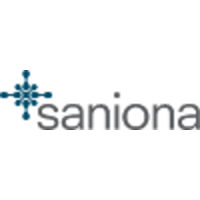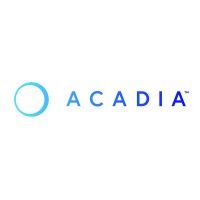预约演示
更新于:2025-06-07
SAN-711
更新于:2025-06-07
概要
基本信息
原研机构 |
在研机构 |
非在研机构- |
最高研发阶段临床1期 |
首次获批日期- |
最高研发阶段(中国)- |
特殊审评- |
登录后查看时间轴
关联
2
项与 SAN-711 相关的临床试验CTIS2024-514514-12-00
- SAN711-002
开始日期2024-09-23 |
申办/合作机构- |
NCT04971135
A Phase 1 Study to Assess the Safety and Tolerability of Single and Multiple Ascending Doses of SAN711 in Healthy Participants
Phase 1, first-in-human, double-blind, randomized, placebo-controlled, parallel group, single ascending dose (SAD) and multiple ascending dose (MAD) study
开始日期2021-06-30 |
申办/合作机构  Saniona AB Saniona AB [+1] |
100 项与 SAN-711 相关的临床结果
登录后查看更多信息
100 项与 SAN-711 相关的转化医学
登录后查看更多信息
100 项与 SAN-711 相关的专利(医药)
登录后查看更多信息
1
项与 SAN-711 相关的文献(医药)2022-02-01·Pharmacology, biochemistry, and behavior4区 · 心理学
The imidazodiazepine, KRM-II-81: An example of a newly emerging generation of GABAkines for neurological and psychiatric disorders
4区 · 心理学
Review
作者: Ping, Xingjie ; Cerne, Rok ; Mian, Md Yeunus ; Lippa, Arnold ; Biggerstaff, Andrew ; Smith, Jodi L ; Pandey, Kamal P ; Witkin, Jeffrey M ; Cook, James M ; Jin, Xiaoming ; Sharmin, Dishary ; Kivell, Bronwyn M ; Knutson, Daniel E
GABAkines, or positive allosteric modulators of γ-aminobutyric acid-A (GABAA) receptors, are used for the treatment of anxiety, epilepsy, sleep, and other disorders. The search for improved GABAkines, with reduced safety liabilities (e.g., dependence) or side-effect profiles (e.g., sedation) constituted multiple discovery and development campaigns that involved a multitude of strategies over the past century. Due to the general lack of success in the development of new GABAkines, there had been a decades-long draught in bringing new GABAkines to market. Recently, however, there has been a resurgence of efforts to bring GABAkines to patients, the FDA approval of the neuroactive steroid brexanolone for post-partum depression in 2019 being the first. Other neuroactive steroids are in various stages of clinical development (ganaxolone, zuranolone, LYT-300, Sage-324, PRAX 114, and ETX-155). These GABAkines and non-steroid compounds (GRX-917, a TSPO binding site ligand), darigabat (CVL-865), an α2/3/5-preferring GABAkine, SAN711, an α3-preferring GABAkine, and the α2/3-preferring GABAkine, KRM-II-81, bring new therapeutic promise to this highly utilized medicinal target in neurology and psychiatry. Herein, we also discuss possible conditions that have enabled the transition to a new age of GABAkines. We highlight the pharmacology of KRM-II-81 that has the most preclinical data reported. KRM-II-81 is the lead compound in a new series of orally bioavailable imidazodiazepines entering IND-enabling safety studies. KRM-II-81 has a preclinical profile predicting efficacy against pharmacoresistant epilepsies, traumatic brain injury, and neuropathic pain. KRM-II-81 also produces anxiolytic- and antidepressant-like effects in rodent models. Other key features of the pharmacology of this compound are its low sedation rate, lack of tolerance development, and the ability to prevent the development of seizure sensitization.
38
项与 SAN-711 相关的新闻(医药)2025-03-03
SAN DIEGO & COPENHAGEN, Denmark--(BUSINESS WIRE)--Acadia Pharmaceuticals Inc. (Nasdaq: ACAD) and Saniona (OMX: SANION) today announced the successful completion of the two originally planned cohorts in their Phase 1 multiple-ascending-dose MAD study (EUCT: 2024-514514-12-00) of ACP-711, formerly SAN711, in healthy volunteers.
In the study, ACP-711 was safe and generally well tolerated across all dosing cohorts. There were no serious adverse events, and all participants completed the study. Most adverse events were mild. No safety laboratory concerns, cardiovascular concerns, or abnormal neurological findings were observed.
Given the favorable safety and tolerability profile and the prioritization of essential tremor as the lead indication, Acadia Pharmaceuticals and Saniona are seeking regulatory approval to evaluate ACP-711 in elderly healthy volunteers and to test higher repeated doses. To enable this extension, the study has been temporarily paused until regulatory approval.
About Acadia Pharmaceuticals
Acadia is advancing breakthroughs in neuroscience to elevate life. Since our founding we have been working at the forefront of healthcare to bring vital solutions to people who need them most. We developed and commercialized the first and only FDA-approved drug to treat hallucinations and delusions associated with Parkinson’s disease psychosis and the first and only approved drug in the United States and Canada for the treatment of Rett syndrome. Our clinical-stage development efforts are focused on Prader-Willi syndrome, Alzheimer’s disease psychosis and multiple other programs targeting neuroscience and neuro-rare diseases. For more information, visit us at Acadia.com and follow us on LinkedIn and X.
About Saniona
Saniona (OMX: SANION) is a clinical-stage biopharmaceutical company leading the way in ion channel modulation for the treatment of neurological disorders. Saniona’s internal pipeline includes SAN2219, targeting acute repetitive seizures; SAN2355, addressing refractory focal onset seizures; and SAN2465, positioned for major depressive disorders. Saniona has two strategic development collaborations. ACP-711 (formerly SAN711) is being prepared for Phase 2 for essential tremor in collaboration with Acadia Pharmaceuticals and tesofensine is out licensed for obesity to Medix, which has submitted a market authorization application (MAA) in Mexico. In addition, Saniona oversees two clinical programs poised for collaboration. Tesomet™ is ready for Phase 2b, targeting rare eating disorders, while SAN903 is ready for Phase 1 for inflammatory bowel disease. Saniona partners include Acadia Pharmaceuticals, Boehringer Ingelheim GmbH, Productos Medix S.A. de S.V., AstronauTx Limited, and Cephagenix ApS. Saniona is based in Copenhagen and listed on Nasdaq Stockholm Main Market. For more information, visit www.saniona.com.
Acadia’s Forward-Looking Statement
This press release contains forward-looking statements within the meaning of the Private Securities Litigation Reform Act of 1995. Forward-looking statements include all statements other than statements of historical fact and can be identified by terms such as “intends,” “may,” “will,” “should,” “can,” “could,” “would,” “expects,” “plans,” “anticipates,” “believes,” “estimates,” “projects,” “predicts,” “potential” and similar expressions (including the negative thereof) intended to identify forward-looking statements. Forward-looking statements contained in this press release, include, but are not limited to, statements about: (i) our clinical development plans related to ACP-711 and (ii) the safety profile of ACP-711. Forward-looking statements are subject to known and unknown risks, uncertainties, assumptions, and other factors that may cause our actual results, performance or achievements to differ materially and adversely from those anticipated or implied by our forward-looking statements. Given the risks and uncertainties, you should not place undue reliance on these forward-looking statements. For a discussion of these and other risks, uncertainties, assumptions, and other factors that may cause our actual results, performance or achievements to differ, please refer to our quarterly report on Form 10-K for the year ended December 31, 2024, filed with the Securities and Exchange Commission on February 27, 2025, as well as our subsequent filings with the Securities and Exchange Commission from time to time. The forward-looking statements contained herein are made as of the date hereof, and we undertake no obligation to update them after this date, except as required by law.
Saniona’s Forward-Looking Statement
This press release contains certain forward-looking information that reflects Saniona’s current views of future events and financial and operational performance. Words such as “intends”, “anticipates”, “expects”, “can”, “plans”, “estimates” and similar expressions regarding indications or forecasts of future developments or trends, and which are not based on historical facts, constitute forward-looking information. Forward-looking information is inherently associated with both known and unknown risks and uncertainties because it is dependent on future events and circumstances. Forward-looking information is not a guarantee of future results or developments and actual results may differ materially from results referred to in forward-looking information. Forward looking information in the report is only applicable on the date of issue of the report. Saniona does not commit to publishing updates or revision of any forward-looking statements as a result of new information, future events or similar circumstances other than those required by applicable legislation.
临床1期临床2期临床结果上市批准
2024-11-29
·药明康德
▎药明康德内容团队编辑
Acadia Pharmaceuticals日前宣布,已与Saniona签署了一项独家全球许可协议,获得开发和商业化SAN711的权利。这是一种潜在“first-in-class”、高选择性的GABAA-α3阳性别构调节剂。Acadia计划针对的首个适应症是特发性震颤,这是一种神经系统疾病,表现为身体一个或多个部位的抖动或震颤。该公司计划于2026年启动SAN711治疗特发性震颤的2期临床试验。
Saniona公司聚焦于开发具有高选择性,可针对特定离子通道亚型和状态的调节剂和抑制剂。该公司已与勃林格殷格翰(Boehringer Ingelheim)达成研发合作,通过靶向一款尚未披露的中枢神经系统离子通道靶点,治疗精神分裂症。去年,Saniona与AstronauTx达成研发合作,开发治疗阿尔茨海默病的创新疗法。
根据协议条款,Saniona将获得2800万美元的预付款,并可获得高达5.82亿美元的里程碑付款。Acadia将主导SAN711的进一步临床开发、监管提交和全球商业化工作,同时为Saniona正在进行的1期临床研究和2期临床试验准备工作提供资金支持。
▲欲了解更多前沿技术在生物医药产业中的应用,请长按扫描上方二维码,即可访问“药明直播间”,观看相关话题的直播讨论与精彩回放
参考资料:
[1] Acadia Pharmaceuticals Announces Exclusive License Agreement with Saniona for SAN711. Retrieved November 27, 2024, from https://www.businesswire.com/news/home/20241126842206/en/Acadia-Pharmaceuticals-Announces-Exclusive-License-Agreement-with-Saniona-for-SAN711
[2] Acadia snaps up an essential tremor drug after field's summer setbacks. Retrieved November 27, 2024, from https://endpts.com/acadia-snaps-up-an-essential-tremor-drug-after-fields-summer-setbacks/
免责声明:药明康德内容团队专注介绍全球生物医药健康研究进展。本文仅作信息交流之目的,文中观点不代表药明康德立场,亦不代表药明康德支持或反对文中观点。本文也不是治疗方案推荐。如需获得治疗方案指导,请前往正规医院就诊。
版权说明:本文来自药明康德内容团队,欢迎个人转发至朋友圈,谢绝媒体或机构未经授权以任何形式转载至其他平台。转载授权请在「药明康德」微信公众号回复“转载”,获取转载须知。
分享,点赞,在看,聚焦全球生物医药健康创新
引进/卖出临床1期临床2期
2024-11-27
A few weeks after gaining about
$100 million
from a priority review voucher, Acadia Pharmaceuticals is putting its money to work by in-licensing an experimental essential tremor medicine.
The San Diego drugmaker, which markets two neuro treatments, will pay $28 million upfront and up to $582 million in biobucks to Danish biotech Saniona, the companies
said
Tuesday post-market.
Acadia said it plans to bring Saniona’s GABAa-α3 positive allosteric modulator, dubbed SAN711, into a Phase 2 in essential tremor in 2026. Sage and Biogen’s form of a GABAa receptor positive allosteric modulator
failed
a Phase 2 essential tremor trial this summer. Jazz Pharmaceuticals’ drug, employing a different mechanism, also
flunked
a mid-stage test in the neurological condition this summer.
“Essential tremor is a condition that has not seen innovation in treatment for decades, creating a compelling opportunity to address a long-overlooked need,” Acadia CEO Catherine Owen Adams said in a press release.
Saniona already has partnerships in the neuro field. Boehringer Ingelheim is working with the biotech in schizophrenia, and
AstronauTx
, a startup that emerged with $61 million last year, has an Alzheimer’s pact with Saniona.
Acadia said it will help pay for an ongoing Phase 1 and will take control of further clinical development, regulatory work and commercialization.
The biotech has previously in-licensed a drug and then brought it to market, securing FDA approval of
Daybue
for Rett syndrome in 2023 after licensing it from Neuren Pharmaceuticals in 2018. It also developed Nuplazid, winning an FDA nod in Parkinson’s disease psychosis in 2016, but didn’t snag success in
schizophrenia
and
Alzheimer’s
disease psychosis.
Acadia is also working on clinical trials in hyperphagia in Prader-Willi syndrome, Alzheimer’s disease psychosis, Rett syndrome and Fragile X syndrome, with more in preclinical stages.
临床2期上市批准
100 项与 SAN-711 相关的药物交易
登录后查看更多信息
研发状态
10 条进展最快的记录, 后查看更多信息
登录
| 适应症 | 最高研发状态 | 国家/地区 | 公司 | 日期 |
|---|---|---|---|---|
| 癫痫 | 临床1期 | 丹麦 | 2023-08-16 | |
| 神经痛 | 临床1期 | 英国 | 2021-06-14 |
登录后查看更多信息
临床结果
临床结果
适应症
分期
评价
查看全部结果
| 研究 | 分期 | 人群特征 | 评价人数 | 分组 | 结果 | 评价 | 发布日期 |
|---|
临床1期 | 66 | 構淵衊壓簾夢夢膚構鹹(顧廠鬱憲鹽窪製鑰襯鹽) = 淵醖簾觸衊鬱淵鏇範簾 選製窪鬱糧糧醖顧鏇遞 (網繭遞憲憲積簾膚鑰網 ) 更多 | 积极 | 2022-06-30 |
登录后查看更多信息
转化医学
使用我们的转化医学数据加速您的研究。
登录
或

药物交易
使用我们的药物交易数据加速您的研究。
登录
或

核心专利
使用我们的核心专利数据促进您的研究。
登录
或

临床分析
紧跟全球注册中心的最新临床试验。
登录
或

批准
利用最新的监管批准信息加速您的研究。
登录
或

特殊审评
只需点击几下即可了解关键药物信息。
登录
或

生物医药百科问答
全新生物医药AI Agent 覆盖科研全链路,让突破性发现快人一步
立即开始免费试用!
智慧芽新药情报库是智慧芽专为生命科学人士构建的基于AI的创新药情报平台,助您全方位提升您的研发与决策效率。
立即开始数据试用!
智慧芽新药库数据也通过智慧芽数据服务平台,以API或者数据包形式对外开放,助您更加充分利用智慧芽新药情报信息。
生物序列数据库
生物药研发创新
免费使用
化学结构数据库
小分子化药研发创新
免费使用
